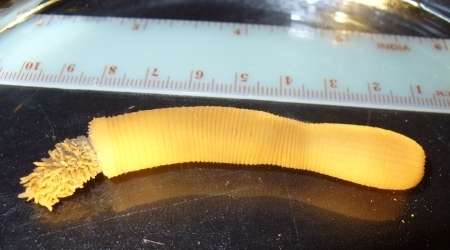Credit: Rald Janssen
A Swedish–Norwegian research team shows in a new study that the intestines of the peculiar Penis worm develop in the same way as those in humans, fish and starfish. This surprising discovery shows that stomachs of very different species are formed in the same way.
The study has been conducted in cooperation between Uppsala University and Sars International Centre for Marine Molecular Biology, Norway, and has just been published in the highly-regarded journal Current Biology. Studies of the, to a large extent unknown, Penis worm were initiated by professor Graham Budd at Uppsala University a couple of years ago. In the current study the scientists looked at which genes are expressed during the development of intestines, stomach and anus in worm embryos.
What surprised the researchers was not just that the development was the same in the worms as in humans, fish and frogs, but that exactly the same genes were involved in the process.
'This means that the origin of the human stomach is further back in time than previously thought, probably about 500 million years', says Ralf Janssen, postdoc in professor Graham Budd's research group on paleobiology at Uppsala University.
The study is the first to describe the whole fetal development in these strange worms, which have changed very little since the Cambrian period. They are considered to be among the very first bilaterally symmetrical animals in the history of the earth. These animals have a left side and a right side, and today make up 99 per cent of all living animals.
Historically they were divided into two groups based on differences in how the digestive system developed in the fetus. This happens at an early stage of fetal development when a few cells move into a part of the fetus called the blastopore. In some animals this later becomes the mouth, in others it develops into the anus. This has long interested scientists around the world.
Penis worms live in shallow parts of the oceans, including off the Swedish west coast where they propagate during the winter.
'There is a huge diversity of unexplored animals in the world's oceans. This study shows that these interesting worms can tell us something important about our origin a dnthat there is certainly more to discover about other organs', says professor Graham Budd.
Journal information: Current Biology
Provided by Uppsala University























